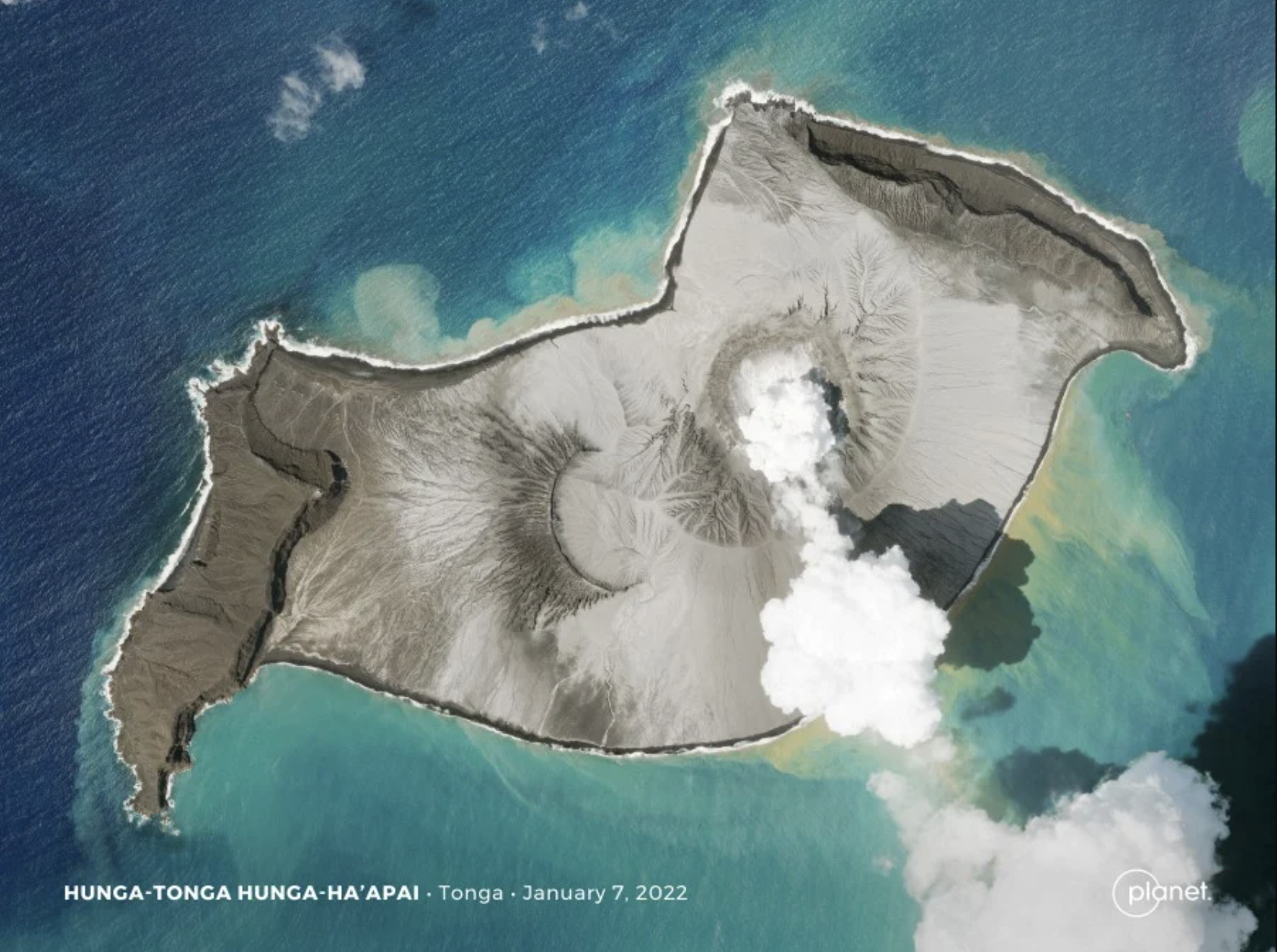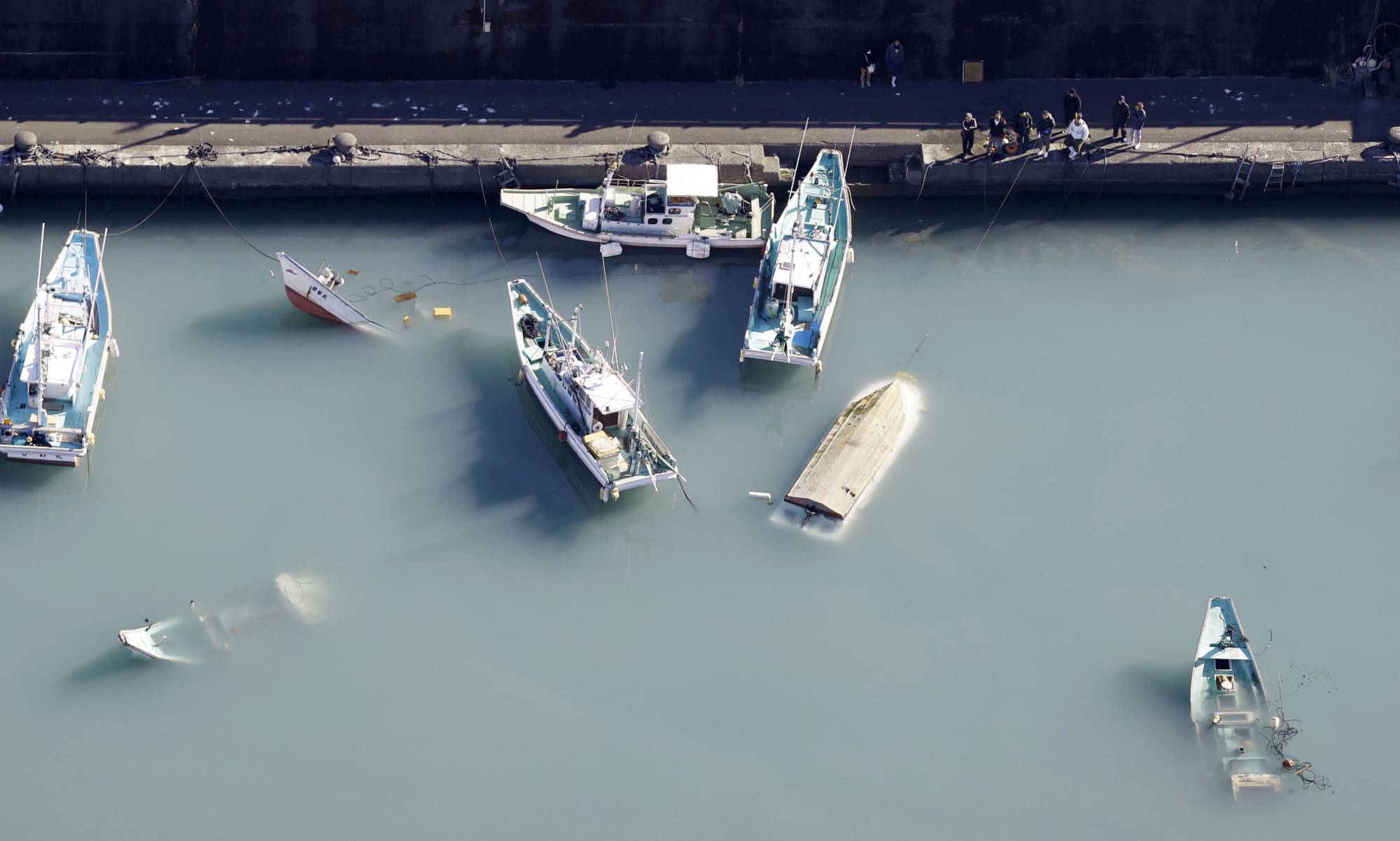Here's What We Know So Far About The Tonga Volcano Eruption That Was Felt Around The World
Tsunami warnings were triggered in several countries while two people in Peru drowned due to unusually high waves.
An undersea volcano in Tonga erupted on Saturday, 15 January, the impact of which was felt around the world and prompted tsunami warnings in several countries
Another large eruption was detected on Sunday, 18 January, according to an alert by the Darwin Volcanic Ash Advisory Centre. The South Pacific nation is calling for immediate aid, with an urgent need for fresh water and food, as it assesses the damage caused by the eruption of Hunga Tonga-Hunga Ha'apai.
Communications remain down and the full extent of the damage and harm to lives is currently unknown, based on a statement by Parliament Speaker Lord Fakafanua circulated on social media.
Here's what we know so far.
What happened on the 15 January eruption?
After weeks of volcanic activity emitting ash, the Hunga Tonga-Hunga Ha'apai underwater volcano erupted violently last Saturday — said to be one of the biggest in Tonga in the last 30 years.
The eruption sent tsunami waves crashing on the shores of Tonga and people rushing to higher ground, with a sonic boom heard as far away as Alaska, USA.
Satellite images showed steam and gas rising like a mushroom cloud approximately 20km in the air and a plume of ash that blanketed the Pacific island nation. Communications were downed, leaving friends and family members across the globe anxiously trying to get in touch to figure out if there were any injuries.
So far, there are no official reports of injuries or deaths in Tonga as yet, but communications are still limited and outlying costal areas remain cut off.
What is an undersea volcano?
An undersea or submarine volcano is located below the ocean surface and mostly erupts under water. According to the Global Foundation for Ocean Exploration, about 75% of all volcanic activity on Earth actually occurs underwater.
Undersea volcanic activities give rise to seamounts — underwater mountains that are formed on the ocean floor but do not reach the water surface.
It is estimated that there are one million undersea volcanoes that are located near the Earth's tectonic plates and where they form. These volcanoes not only deposit lava, but can also spew out large amounts of volcanic ash.
What was the extent of the eruption's impact?
The Malaysian Meteorological Department (MetMalaysia) assured that there is no tsunami threat here following the eruption.
The department said, based on continuous monitoring, tide gauge readings, international and local buoys, as well as information from the Regional Tsunami Service Provider's website, there was no indication of a tsunami threat to Malaysia.
However, Japan's Pacific coast was hit early Sunday by meter-high waves, prompting nearly 230,000 residents to move to higher ground. There were no immediate reports of injuries, but at least 28 boats either capsized, sank or floated away.
Ships are seen capsized at a port in Muroto, Kochi Prefecture, on Sunday.
Image via Kyodo via The Japan TimesThe eruption also sent waves to the US West Coast, with some exceeding 0.9m to 1.2m in height, according to the National Weather Service office in San Diego.
In California, the city of Santa Cruz was hit by flooding due to a tidal surge generated by the tsunami, videos retweeted by the US National Weather Service showed.
Meanwhile, Reuters reported that two people drowned after unusually high waves were recorded in several coastal areas in northern Peru. The nation also closed 22 ports as a precaution.

